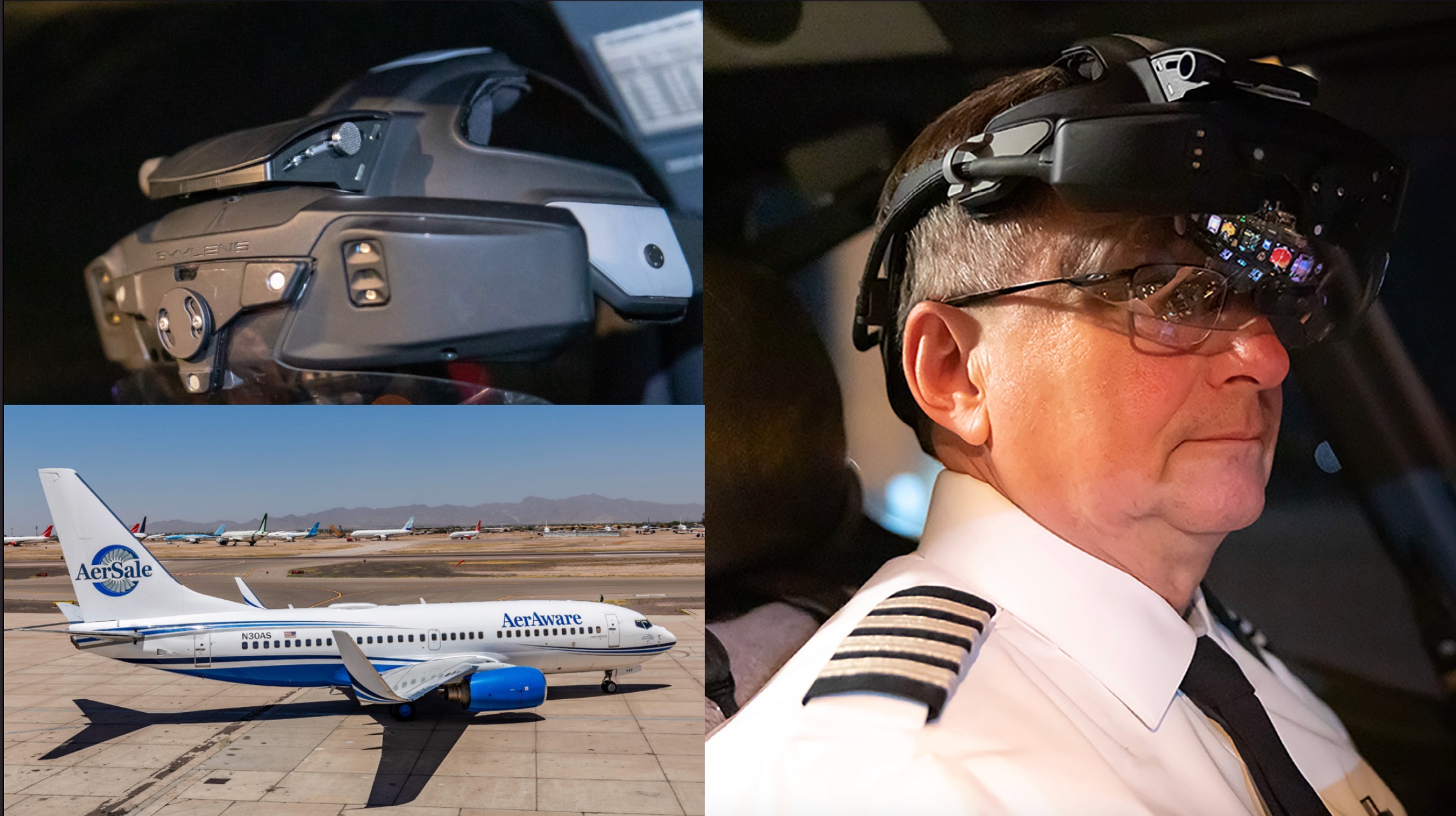AerAware's SKYLENS, a Glimpse into Enhanced Aviation Reality
Yesterday, I was at the airport pondering the future of aviation and what changes we can expect over the coming years. That's when I stumbled across the AerAware SKYLENS headset.
This headset represents a significant leap forward in an industry perpetually on the cusp of a technological revolution. As someone deeply entrenched in exploring extended reality (XR) technologies, I find their recent development particularly intriguing.
The Federal Aviation Administration (FAA) recently certified the SKYLENS for the Boeing B737NG as part of a comprehensive Enhanced Flight Vision System (EFVS). It's not just about enhancing flight safety but redefining the pilot's interaction with their environment.

AerSale's AerAware system, which includes the SKYLENS, offers a mixed reality experience that enhances situational awareness, especially in low visibility conditions. It's akin to a heads-up display (HUD), but with a critical addition – the superimposition of synthetic terrain. This feature ensures that pilots comprehensively view their surroundings, seamlessly integrated with the aircraft's performance data.
The SKYLENS stands out with its ability to match terrain information to the pilot's head movements, offering a 180-degree field of view. This is a game-changer. It transcends the limitations of traditional HUDs, allowing pilots to maintain a constant, expansive view of their environment.
WTF?
However, the technology is not without its complexities. Installation involves integrating Universal Avionics/Elbit Systems EVS–5000 multispectral cameras and a series of internal cameras and sensors. Such intricacies raise questions about the practicality and adaptability of the system.
Moreover, while the device promises a 50% visual advantage and reduced visibility minimums in low-visibility conditions, there's an undercurrent of skepticism.
How will it fare over extended periods, given the fatigue often associated with mixed reality devices? The comfort and endurance of pilots wearing the SKYLENS, especially those who need corrective glasses, remains a subject for further exploration.
Currently limited to the Boeing 737NG, with an installation and training timeframe of 3-5 days per aircraft, the SKYLENS targets a niche market. Yet, its implications are far-reaching.
As we gear up for Metaverse Day, a summit that brings together the brightest minds in the field, the SKYLENS will undoubtedly be fascinating and debated. It is a testament to the boundless possibilities of XR technology in aviation, pointing us toward a future where the lines between virtual and physical realities blur, creating safer, more efficient skies.



Member discussion